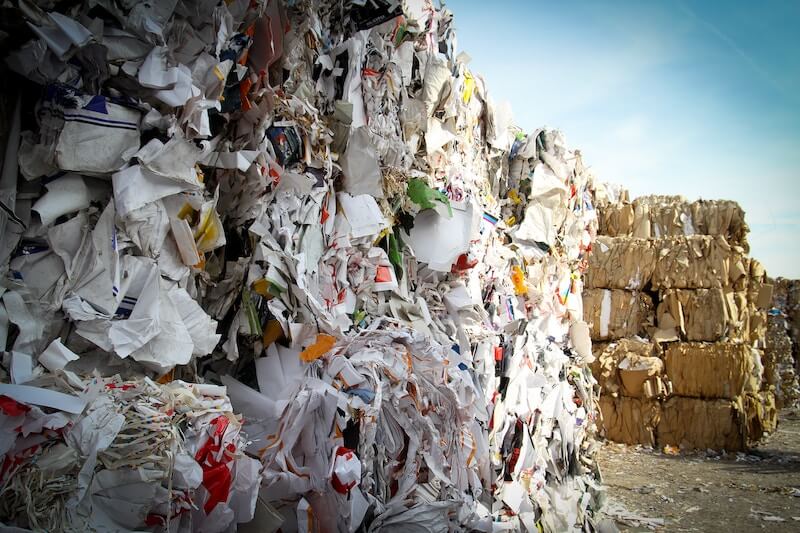Just as energy and water are connected, so too are energy and waste. It takes water to make energy and energy to make and transport clean water. We certainly make waste from the production of energy. Do we make energy from waste?
History of Energy from Waste
In the U.S., the main way to produce energy from waste is through burning biomass to convert steam into electricity. This started in 1885 – the first incinerator was installed on Governor’s Island in New York. With the increased focus on pollution in the 1970s, the incinerators were regulated, and emissions were controlled. Now, the ash produced must be captured, filtered, and properly disposed of. In 2017, burning biomass produced 14 billion kilowatt-hours of electricity and reduced the amount of garbage sent to landfills by around 87%.
Electricity can also be generated using the methane gas produced by landfills. When anaerobic bacteria break down the waste in landfills, they produce methane, also known as landfill gas. The production and buildup of methane used to be a big problem in landfills. Vents were installed to collect the methane. The collected methane gas can be burned to produce energy. In 2017, 0.3% of the energy produced in the U.S was from burning landfill gas.
Supercapacitors
Supercapacitors, or ultracapacitors, are electrochemical storage devices. They have a very high capacitance and low voltage limits. They can store more energy and charge faster than batteries. Their low energy density means they can’t be used as a continuous power source.
Supercapacitors have porous material coating two metal places placed in an electrolyte solution. A double layer of charged ions forms on the metal plates when a voltage is applied to the supercapacitor.
Supercapacitors have many applications for short term power needs. They are the power behind regenerative braking in hybrid cars. Other than cars, some common uses for supercapacitors are consumer electronics, medical devices, utility meters, and backup power.
The porous material coating the metal plates is usually either activated carbons, carbon aerogels, graphene, carbon nanotubes, carbon nanofibers, or nano-sized carbons. The accessibility, processability, non-toxicity, high chemical stability, and wide temperature range of these porous materials make these ideal for use in supercapacitors.
Recycled Biomass
In recent years, researchers have been looking at using recycled biomass as the porous material in supercapacitors. This typically involves using animals, minerals, or plants to create activated carbon. Researchers have studied using coconut shells, sugarcane bagasse, oil palm kernel shell, corn cob residue, crab shell, cassava peel waste, soybean roots, orange peel, milk-free coconut kernel pulp and porous starch to create the activated charcoal.
All these studies used some type of chemical or thermal activation method to produce the carbon and most used chemicals to activate the carbon. One study done on orange peels found that mixing KOH and K2CO3 as the activator enlarged the pore size of the activated carbon. Enlarging the pore size increases the amount of energy that can be stored. All studies found that the various carbon-based waste products would serve well in supercapacitors – the higher carbon content the better.







 We're more than just brokers. We're A/E specialists, delivering the right coverage and exceptional value and service to hundreds of design firms of all sizes. Of course we leverage the latest industry resources to provide you with coverage, risk management and contract review tailored to your practice. But we also remember the difference between simply billing clients and actually serving them. See for yourself. Contact us of a competitive quote on your professional liability insurance.
We're more than just brokers. We're A/E specialists, delivering the right coverage and exceptional value and service to hundreds of design firms of all sizes. Of course we leverage the latest industry resources to provide you with coverage, risk management and contract review tailored to your practice. But we also remember the difference between simply billing clients and actually serving them. See for yourself. Contact us of a competitive quote on your professional liability insurance.